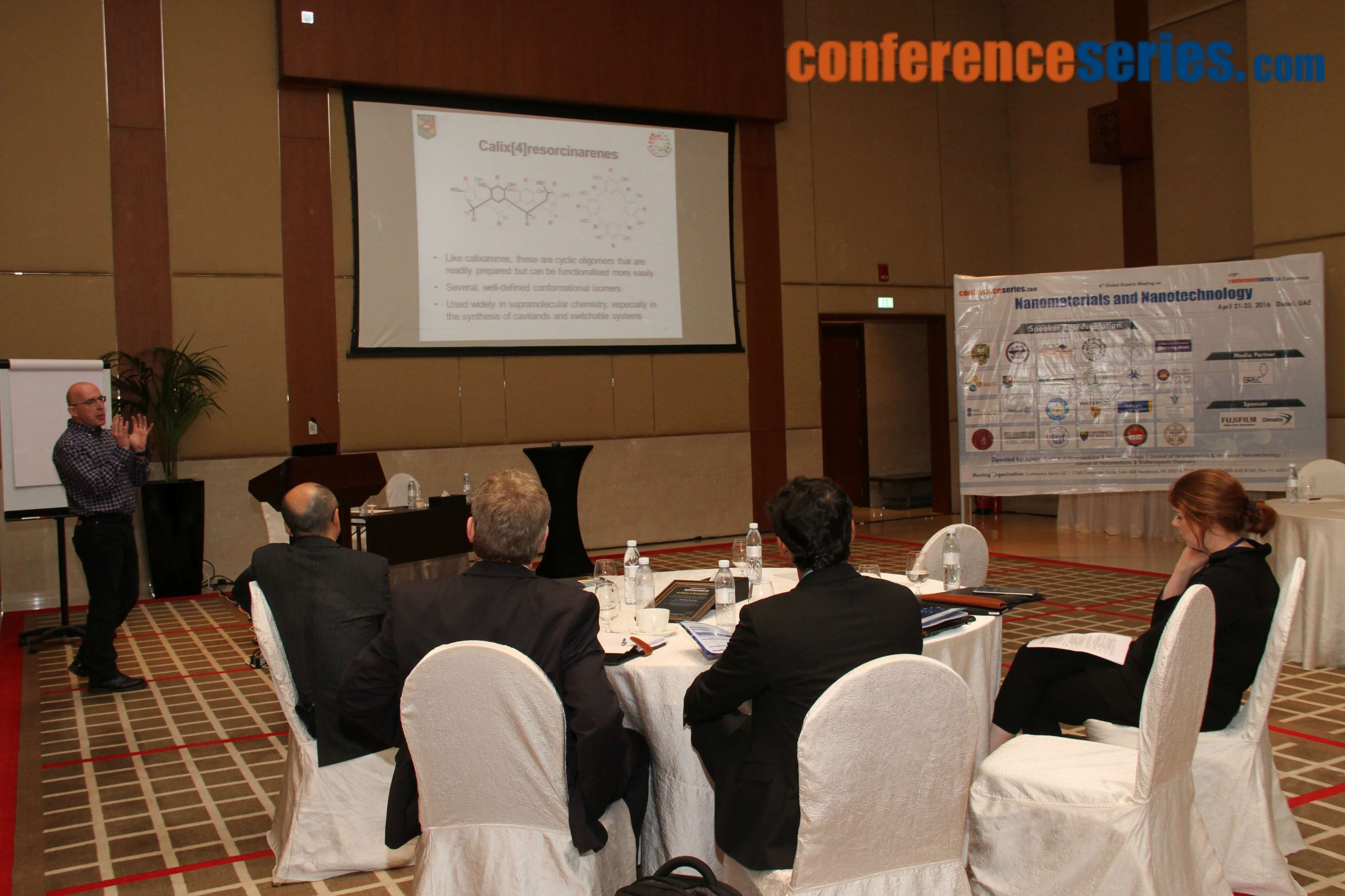
Anthony D.M. Curtis
Keele University, UK
Title: Use of a Novel Calix[4]resorcinarene for Drug Solubilisation
Biography
Biography: Anthony D.M. Curtis
Abstract
Calix[4]resorcinarenes (CXRs) are cyclic oligomers commonly used as starting materials or building blocks in the design of supramolecular systems but a recent review has detailed their potential for drug delivery. They have well-defined upper and lower rims and possess a central hydrophobic cavity for host guest interaction with organic molecules. CXRs enhance the solubility of hydrophobic drugs via hydrophobic interaction. However, studies have suggested that the defined interior of the calixarene structure is only suitable to solubilise drugs of a certain architecture. This work focussed on the solubilisation potential of a sulfonated CXR using propofol as a model hydrophobic drug. Propofol is a commonly used short acting anaesthetic agent currently formulated as an oil in water emulsion due to its poor aqueous solubility. This viscous solution often proves painful to patients resulting in the need for pain relief . In this study a sulfonated CXR derived from octanal was fabricated and characterised by 1H NMR and FTIR. The CXRs formed were 92 nm at low concentration (0.01 mgmL-1), however at increased concentration (5 mgmL-1) the size increased to 363 nm. The drug loading studies showed an increase in propofol solubilisation up to 9 mgmL-1, which, when combined with the particle size measurements suggests that supramolecular species are formed in which drug molecules are surrounded by the CXRs rather than an individual drug molecule being hosted within the hydrophobic cavity of the CXR. This study highlights the potential of sulfonated CXRs as drug solubilising agents.




